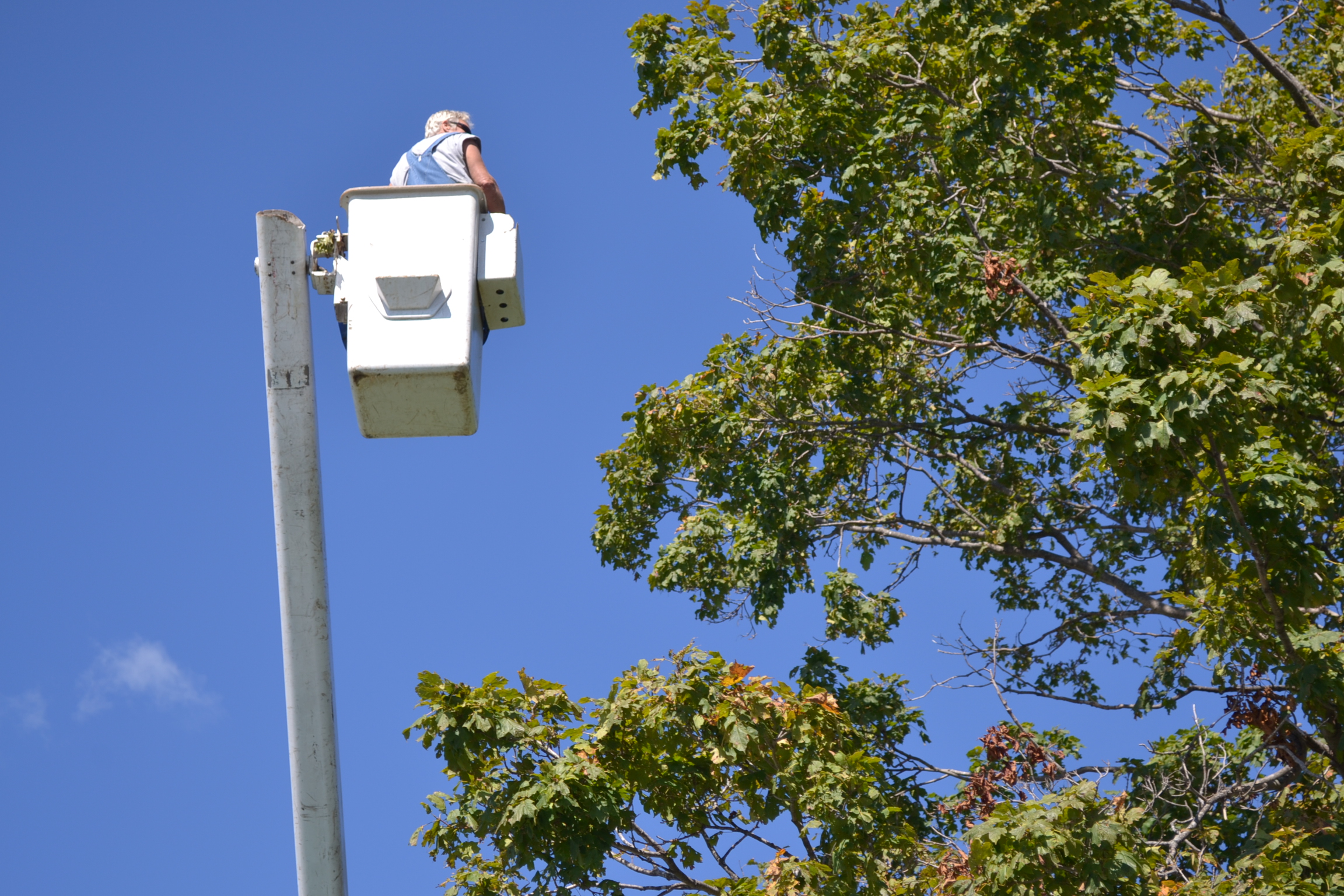Trimming trees should be done on a regular basis to help the tree maintain a uniform shape. When you are trimming trees, it is important to know what varieties should be pruned at what time of year. Trimming trees can be done at any time of the year if the tree requires light pruning or if you are removing storm damage. Light pruning refers to cutting a few low-lying branches or branches that may pose an obstruction. You will have to weigh the pros and cons of trimming a storm damaged tree at a time that is not ideal. If the tree poses a safety hazard by not trimming it or if the damage is significant enough that further damage can occur if the tree is left untrimmed, it will probably be necessary to trim the tree. Storm damage can leave broken branches suspended in the tree, just waiting to fall with the next hard wind. This can cause a safety risk to people or cause additional property damage to occur.
Trimming trees during different times of the year.
Winter pruning while the tree is dormant, is the most popular time of year to prune. When there is no foliage on the tree, it is easier to see dead or damaged sections of the tree to remove. Having only the branching skeleton of the tree allows the pruner to better visualize the shape of the tree. Some trees such as maple varieties may subsequently bleed after tree trimming is done in the winter. Trees such as oak do best when trimmed during the winter. This reduces the trees chances for oak wilt.
Summer pruning can be done to most varieties to help correct low branching. With the full weight of the foliage on the trees, it is easier to see what branches can be troublesome and need adjusting or complete removal.
Flowering trees should be pruned in late winter or early spring, right before they bloom.



